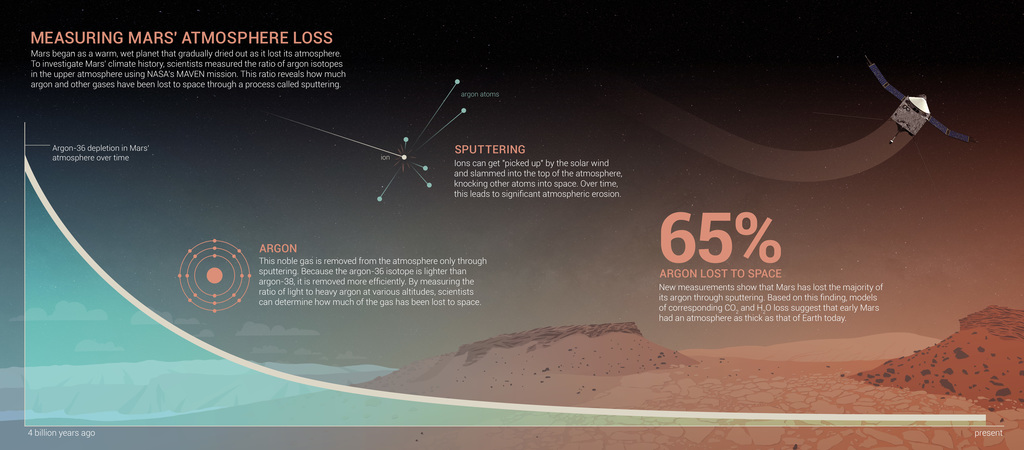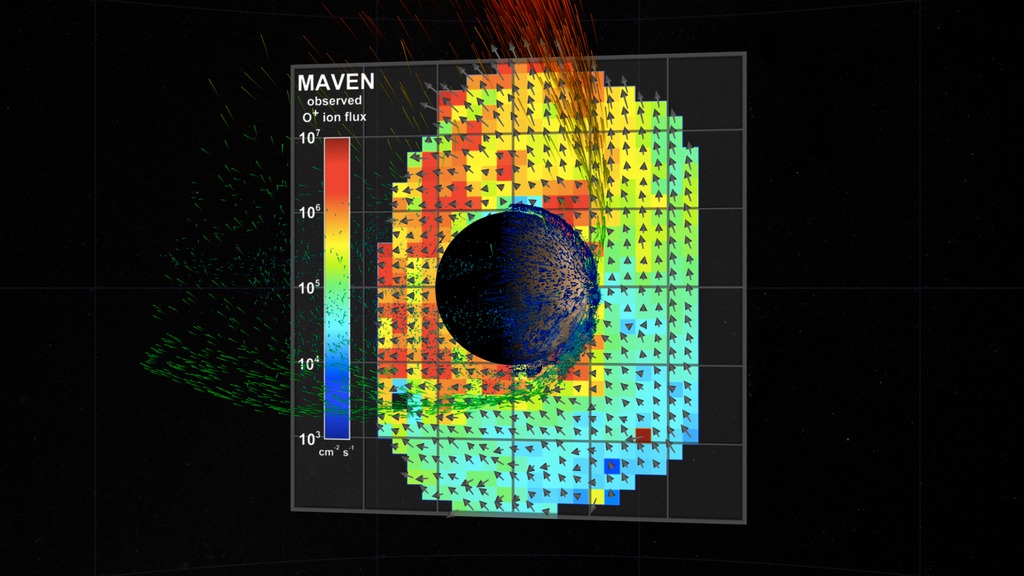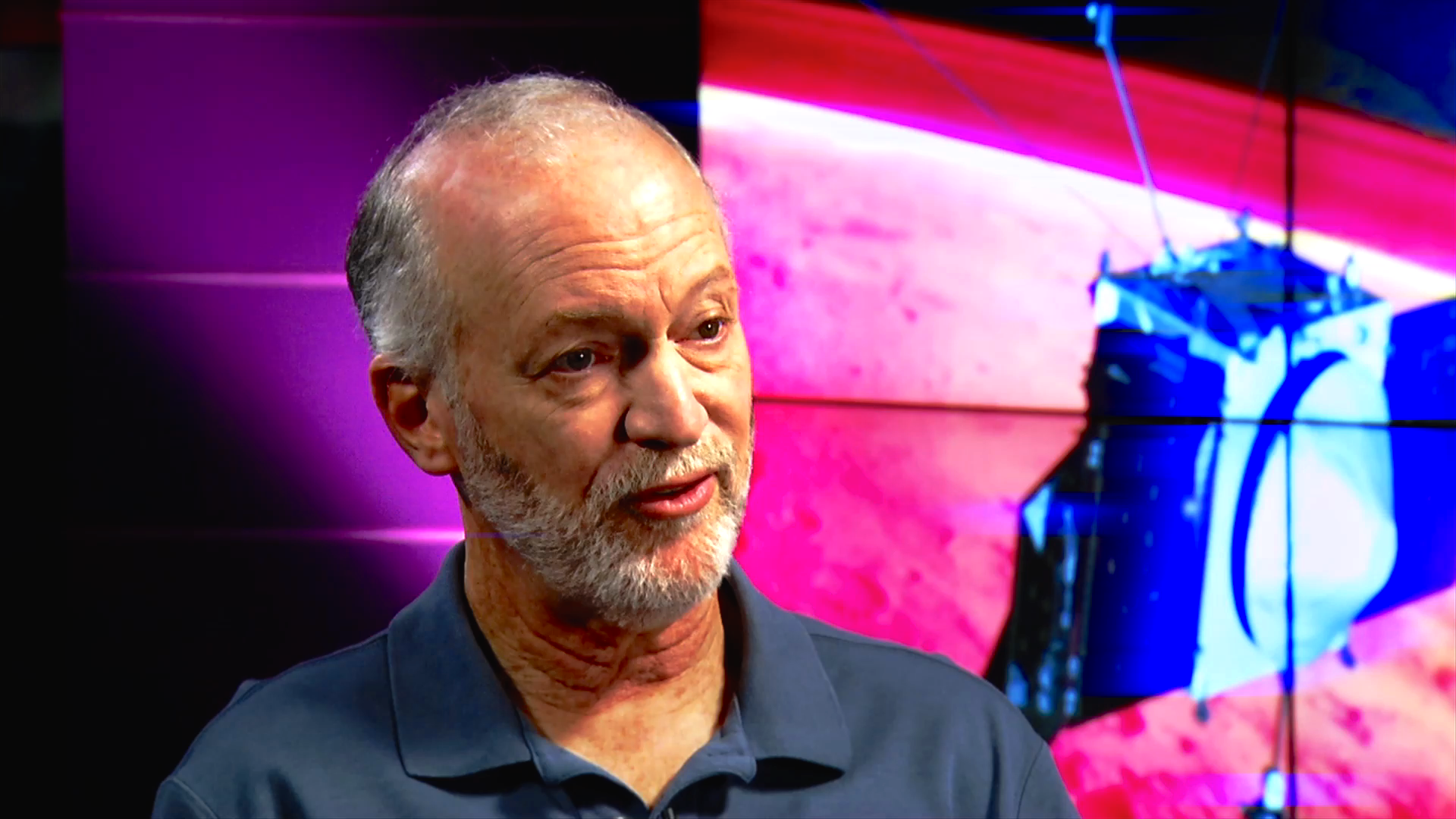Terraforming the Martian Atmosphere
One of the challenges of terraforming Mars is to increase its atmospheric pressure, which is currently less than 1% that of Earth. The Martian polar caps, minerals, and soil could all provide sources of carbon dioxide and water to thicken the atmosphere. Unfortunately, a new study by the MAVEN science team finds that processing all sources available on Mars would only increase the pressure to about 7% that of Earth, far short of what is needed.
Learn more about this finding.

Text and Textless Digital Versions of Infographic

Text and Textless Print Versions of Infographic

Text and Textless Broadcast Versions of Infographic
Credits
Please give credit for this item to:
NASA's Goddard Space Flight Center Conceptual Image Lab
-
Animator
- Bailee DesRocher (USRA)
-
Artistic director
- Michael Lentz (USRA)
-
Scientist
- Bruce Jakosky (LASP)
-
Producer
- Dan Gallagher (USRA)
-
Support
- Walt Feimer (KBR Wyle Services, LLC)
-
Technical support
- Aaron E. Lepsch (ADNET Systems, Inc.)
Missions
This page is related to the following missions:Release date
This page was originally published on Monday, July 30, 2018.
This page was last updated on Thursday, November 9, 2023 at 12:29 PM EST.




